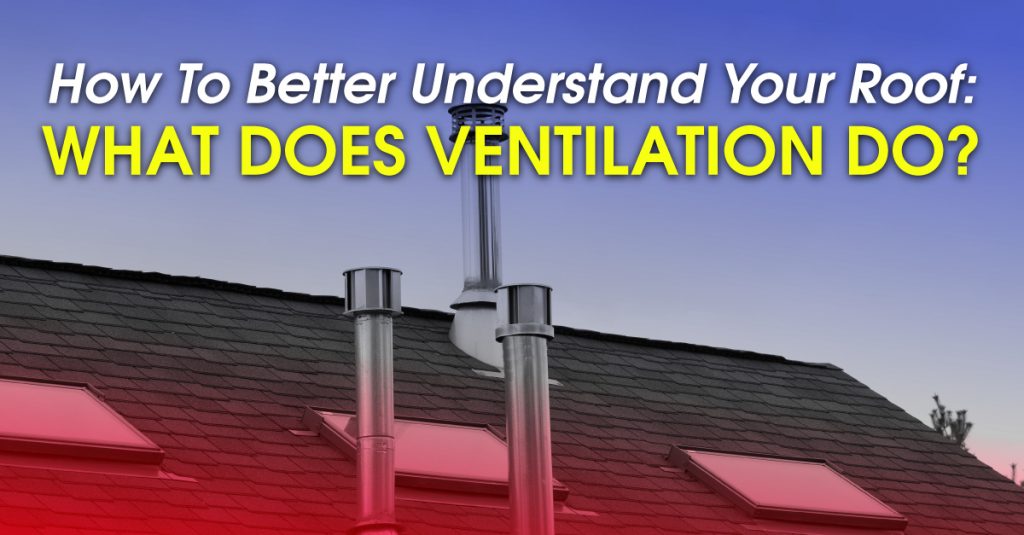Although out of site, roof ventilation plays a vital role in keeping your home comfortable. Attic ventilation is meant to keep attics cool in hot summer months and warm during colder winter months. By encouraging natural airflow and circulation around the attic, you can keep your home more comfortable by creating a path for hot, stale, or moist air to leave the house.
How Roof Ventilation Works
Attic ventilation is essential in both hot and cold climates. During colder days, warm air trapped in the attic can cause snow to melt quickly and refreeze as ice. Typically, ice dams can be destructive to roofing shingles and gutters. Besides, hot air condensing in an attic can trigger mold and mildew growth.
During hot summer days, a well-vented attic enables hot air to escape from the roof area and attic, lowering the overall temperature of your home and reducing the cooling load on your air conditioners. Unfortunately, poor ventilation in hot climates can cause asphalt shingles to wear prematurely and even void some manufacturers’ material warranties.
A well-designed and correctly installed attic ventilation system will provide excellent temperature and moisture control, protecting your home from unnecessary damage. It also helps maintain comfortable indoor temperatures year-round.
Types of Roof Vents
The most common vents used in roof ventilations include static, gable, and ridge vents. Static vents are horizontal openings or vent-covered holes in the roofing system, allowing for airflow.
Ridge vents typically run along the peak of the roof, providing an external baffle to improve airflow and protect your house from rain. Gable vents, on the other hand, are inserted in the ends of the attic. They are used in conjunction with other types of vents.
Maintaining your Roof Ventilation System
Always have your roof ventilation system inspected along with your roof at least once every year. Your roofer will inspect for weather damage such as loose vents, cracks, and broken or missing shingles around vents. Also, look for anything blocking the vents, such as leaves and debris. Additionally, be sure to inspect your attic insulation to ensure it’s in good shape to keep your home well-insulated against exterior temperature changes.
Overall, the correct design and construction of a roof ventilation system ensure plenty of air space and airflow under your roof and eaves. For help with roof ventilation installation, repair, or maintenance, contact StormForce in Jacksonville, FL.
